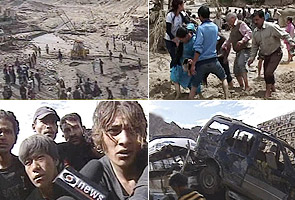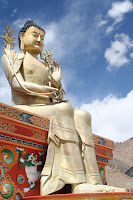HIMACHAL DRIVING HOLIDAY - 2010 By Roopa Sreedhar (9886162404)
Participant Interest Form @ http://spreadsheets.google.com/viewform?hl=en&formkey=dEVXQjRFZ1ZRV3lwLU9SYVVMajkwb2c6MA#gid=0
 28 August 2010: 5:30 pm @ 36, Chandralok, Janpath, Delhi. The night journey to Manali in a semi sleeper. Simple Dinner awaits at Karnal. We hope to reach Manali by 10 am the next day. Here begins one of the most exotic journeys of India.
28 August 2010: 5:30 pm @ 36, Chandralok, Janpath, Delhi. The night journey to Manali in a semi sleeper. Simple Dinner awaits at Karnal. We hope to reach Manali by 10 am the next day. Here begins one of the most exotic journeys of India.
29-August-2010: We arrive at Manali by 10 am if there are no delays. After a sumptuous breakfast, we check in into the hotel booked for the day. A day tour of Manali takes us to the famous HADIMBA temple; allow us to stroll in the local markets and lose ourselves in the magic of this small hill town. We can capture in our memory the experience of eating local dish Shidu.
30-August-2010: We leave Manali to move southward. Indulge in a short trek up to Banjar fort on the way, visit Sojha & cross Jalori Pass to reach picturesque Gushaini by dawn.

31-August-2010: Relax at Gushaini.
1-Sep-2010: A
 fter a much needed break at Gushaini, we leave very early in the morning towards Manali for a very quick lunch. We move ahead to Keylong for night halt. We cross the Rohtang Pass, visit Beas Kund, the origin of mighty river Beas. Driving on the edge of the cliffs that overlook the fierce Bagha & meandering Chandra rivers, we reach Keylong.
fter a much needed break at Gushaini, we leave very early in the morning towards Manali for a very quick lunch. We move ahead to Keylong for night halt. We cross the Rohtang Pass, visit Beas Kund, the origin of mighty river Beas. Driving on the edge of the cliffs that overlook the fierce Bagha & meandering Chandra rivers, we reach Keylong.State: Himachal Pradesh
Distt: Lahaul & Spiti
Destination: Kaza
Climate: Extremely cold during winter and difficult to approach, temperature drops well below even -20 degrees, cold during summer. Rainfall is almost zero and Heavy Woolens both in Summer Winter.
Altitude: Kaza is situated at an altitude of about 4,270 meters.
Best time to visit: Mid-June to Late October.
2-Sep-2010: We leave from Keylong & explore Kardang, Tayar & Guru Ghantal Monasteries. Rangrik, with the view of Key Monastery perched on high cliffs, is our destination. Barren mountains & desert like ambiance yet cold and comfortable, not to be found in any other part of the world.
3-Sep-2010: Time to explore the Spiti Valley, Key Monastery, Kibber Village, highest village in the world which is connected by motor-able road, Dhankar with an ancient fort and an 800-year-old Dhankar Monastery.

4-Sep-2010: Pin Valley
5-Sep-2010: Tabo Kaza Nako :At nearly 10,000 feet, Nako is like a green oasis in Spiti's high altitude desert. Kungri: Spiti's second oldest monastery is located in the Pin valley 45 kms from Tabo. The Kungri gompa was built around 1330 AD. Dhankar

6-Sep-2010: Chandratal: Chandertaal is situated at an altitude of about 4,270 meters. Camping next to this lake is one of the most beautiful experiences of the holiday. The sky is so clear that we can see the Milky way galaxy and zillions of stars shining down upon us.
7-Sep-2010: Back to Manali by Lunch gives us the whole evening to rest and get ready for the long journey ahead the next day.
8-Sep-2010: On the way to Dharamashala.
9-Sep-2010: Spend first half of the day soaking in the sights of Dharamshala, we pay homage to Dalai Lama. Post lunch we leave for Jammu. Arrive at Jammu by dinner time. The next day, we are to le
10-Sep-2010: Adios to all amigos! A sigh of contentment of having been in paradise once. When Buddha beckons & Himalayas call, how can one resist? Am sure we will come back again & again & again.........
If you are interested in joining us do fill up the Participant Interest Form @ http://spreadsheets.google.com/viewform?hl=en&formkey=dEVXQjRFZ1ZRV3lwLU9SYVVMajkwb2c6MA#gid=0
Roopa Sreedhar
roopa.sreedhar@tagindia.net
9886162404



















